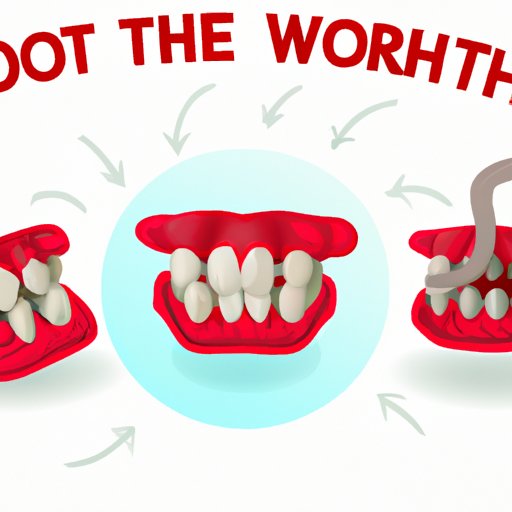
Introduction
Teeth discoloration is a common problem that affects many people. This article aims to provide information on how to get your teeth white through different methods, including natural remedies, over-the-counter products, professional treatments, diet, and oral hygiene practices.
Natural Remedies
Natural remedies are becoming increasingly popular as an alternative to chemical teeth whitening products. Baking soda, hydrogen peroxide, and lemon juice are all effective natural teeth whiteners. To use baking soda, mix it with water to create a paste and brush your teeth with it. Hydrogen peroxide can be used as a mouthwash, but it should be diluted first. Lemon juice can be rubbed onto the teeth and left for a few minutes.
It is essential to use natural remedies safely and effectively. Overuse of baking soda can damage tooth enamel, so it should only be used once a week. Hydrogen peroxide can cause gum irritation or tooth sensitivity, so it should be used in small amounts. Lemon juice can erode tooth enamel, so it is advisable to rinse your mouth with water after using it.
While natural remedies are safe when used in moderation, excessive use can lead to adverse effects.
Over-The-Counter Whitening Products
Over-the-counter products such as whitening toothpaste, strips, and gels are readily available and easy to use. Whitening toothpaste contains mild abrasives and chemicals that remove surface stains. Whitening strips and gels contain peroxide, the same active ingredient used in professional treatments.
Although over-the-counter whitening products are generally safe, they can cause sensitivity or irritation in some cases. Most are only effective in removing surface stains, so they may not produce the desired results for more severe discoloration.
When selecting the right product, consider the individual needs and preferences. Whitening toothpaste may be suitable for people with mild discoloration. Whitening strips are an excellent option for those who want to see quick results. Whitening gels are better for people with moderate to severe discoloration.
Professional Whitening Treatments
Professional whitening treatments are often the most effective option for stubborn discoloration. In-office treatments typically take one to three hours, and the dentist uses a powerful bleaching agent to whiten teeth. At-home treatments involve wearing custom-made trays filled with whitening gel for around two weeks.
Professional treatments deliver immediate results but can be costly. They may also cause sensitivity or irritation to some people, although these side effects usually go away after a few days.
When selecting the right dental professional, choose one who has experience and is knowledgeable in performing teeth whitening procedures.
Diet and Lifestyle
Certain foods and habits contribute to staining and discoloration of teeth. Foods like coffee, tea, wine, and berries are notorious for staining teeth. Smoking is a significant cause of tooth discoloration.
Eating teeth-friendly foods like dairy products, fruits, and vegetables can help to maintain whiteness. Crunchy foods like apples and carrots can remove surface stains. Drinking plenty of water helps to rinse teeth and reduce staining.
Avoiding staining foods and drinks and quitting smoking are essential for maintaining white teeth.
Oral Hygiene
Good oral hygiene practices, including brushing, flossing, and rinsing, are essential in maintaining white teeth. Brushing twice a day with a fluoride toothpaste helps to remove surface stains. Flossing removes bacteria and food particles that cause staining. Using mouthwash helps to kill bacteria that cause discoloration.
Regular dental cleanings remove tartar buildup and surface stains that cannot be removed with brushing or flossing. It also helps to identify and treat any dental issues that can cause discoloration, like tooth decay or gum disease.
Maintenance Tips
After whitening teeth, it is crucial to maintain the shine. Avoiding staining food and drinks like coffee, tea, and wine are essential. Drinking water regularly and rinsing after eating can also help reduce staining. Brushing and flossing twice a day and using a good whitening toothpaste can help maintain white teeth.
Conclusion
Teeth discoloration is a common problem, but there are many options for getting your teeth white. This article has explored natural remedies, over-the-counter products, professional treatments, diet, and oral hygiene practices. By following these tips, anyone can achieve a brighter, more beautiful smile.
Remember that maintaining white teeth is an ongoing process that requires dedication and consistency. Don’t be afraid to consult a dental professional if you have any questions or concerns.




